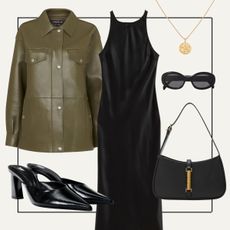I’m a Beauty Editor Who Just Turned 30—7 Changes I’m Making to My Skincare
As is to be expected when a landmark birthday looms, the weeks and months prior to my thirtieth birthday felt like they were building up to a seismic event. There was no shortage of both excitement and dread (whether warranted or not) as I began to mourn my twenties, while simultaneously looking forward to a decade which my thirty-something friends continuously told me would be ‘the best one yet’. But the thing is, when the day itself actually comes, turning 30 doesn’t actually feel any different to turning 29, or 25, or 21.
In reality, of course, I know that when it comes to my body and my skin, this is going to be the decade where big changes happen. "As you hit your thirties, you may find your skin becomes less elastic and you might also find that it is slightly drier or oiler (this can vary due to hormones) because the rate of collagen and elastin production lowers,” explains dermatologist Sonia Khorana. "You can also start to see some early signs of ageing, as well as the first effects of sun damage that most likely happened in your younger years. Loss of volume in cheeks can also start happening and this can make under eye changes appear more prominent.”
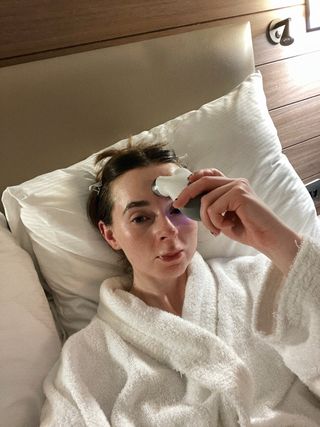
I’m a huge believer in the fact that ageing is a privilege, and I’m no lover of the term ‘anti-ageing’. As a beauty editor and esthetician, I’m well aware that there really is no such thing. Skin ages, whether we like it or not, and while there are plenty of potent antioxidants and scientifically proven ingredients that can help to slow down the appearance of ageing skin, nothing that you apply to your face can stop it in its tracks. Sure, wearing daily SPF and using ingredients like retinol and vitamin C will help, but a lot of skin ageing is down to genetics or to damage that occurred to our skin much earlier in life.
"Prevention is better than cure, so the earlier you start taking care of your skin the better but it is never too late to start,” says Khorana. "In fact, your thirties is the perfect time to start incorporating "anti-ageing” or active ingredients so you can target specific concerns.” If you haven’t already, there are a few simple changes to your skincare regime you can make that will make a huge difference in the long term. Keep scrolling for the changes I’m making to my skincare routine for my thirties.
1. Using Antioxidant Ingredients
"It is important to have a good skincare routine in your thirties to preserve collagen as well as to stimulate collagen and elastin production to keep your skin looking its best,” says Khorana. "There are some key skincare ingredients that can help, along with in clinic treatments such as microneedling, radiofrequency, lasers, and IPL.” Collagen and elastin are responsible for keeping our skin looking and feeling plump and tight. Our bodies naturally produce them, but this production starts to slow down once we’re in our late twenties. As it decreases, skin appears looser and thinner, which means it creases more easily, and over time, these creases form fine lines and eventually wrinkles. To protect collagen and elastin, look out for skincare that contains antioxidant ingredients—antioxidants protect the skin from free radicals, which we’re exposed to through things like pollution and sun exposure, and which further contribute to the breakdown of skin’s collagen and elastin. But which antioxidants are best to use?
"In the morning, I would recommend incorporating vitamin C into your routine. It’s been heavily researched—it helps prevent free radical damage, helps improve brightness and helps build collagen,” says Khorana. For the evening, she recommends using a retinoid based serum or cream. "A retinoid is a great addition to your skincare routine for your thirties as it encourages skin cell renewal, collagen production, exfoliation, reduces the appearance of pores and regulates oil production. It’s a superhero ingredient for me,” she adds.
Shop the hero products:
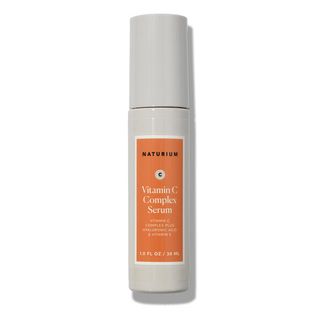
Effective but low cost vitamin C serums are surprisingly hard to come by, but Naturium's is one of the best I've tried.
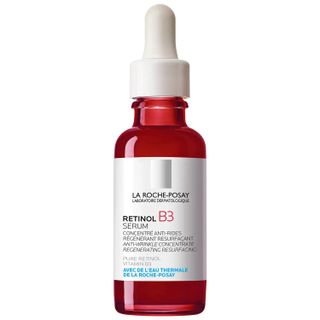
Ideal for those who are new to using a retinoid, this contains a pure but gradual release form of retinol which delivers collagen-stimulating benefits without any drying or irritating side effects.

Powered by retinaldehyde, one of the most advanced forms of retinoids available 'off the shelf', this night cream works to aid the production of collagen while you sleep.
2. A Daily Face Massage
Every time I go for a facial I walk out promising myself I’m going to start incorporating more facial massage techniques into my daily routine. After all, who wouldn’t want to see that post-facial lift and glow on a daily basis? And as it turns out, facial massage has far more than just an immediate effect—if practiced regularly, the long term benefits can help to address some of the key signs of ageing skin. "Adding the simple step of facial massage into your routine helps to stimulate and re-energise all the natural functions, such as blood flow, detoxification and cell turnover meaning collagen production,” explains Sophie Perry, Global Education Manager at FaceGym. "The more you keep consistent the better the results for all ages.”
If you’re curious about exactly how to start with facial massage, I’d highly recommend getting some face time with a FaceGym trainer—they’re available both in person at FaceGym’s studios and via online 1:1 masterclasses. The brand refers to their treatments as workouts—they incorporate vigorous muscle manipulation techniques to produce immediate results. "FaceGym trainers are armed with so many at home techniques to recommend specifically to their clients needs to help maintain results at home,” says Perry. "I always say if you’re super new to the practice, start by including a few moves into your cleansing routine if you struggle with time,” she adds. "Above all, don’t overthink it! Begin with a few key moves every day on an area you wish to focus on. It doesn’t need to be more than a few minutes, the key is to stay consistent, and you can always built upon your practice once you start to notice the results.”
Shop the hero products:

In addition to hand massage, FaceGym trainers incorporate handy tools like this six-sided gua sha into their facial workouts. It can be used for both muscle-stimulating massage and gentler lymphatic drainage.

A mini yoga ball for your face—this massage tool helps to relax muscles and relieve tension.
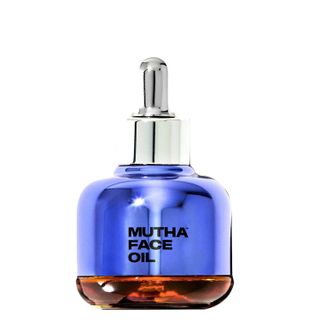
With any form of facial massage, a face oil is essential to provide 'slip'—which means your hands or tools will move smoothly over your face, without pulling on skin.
3. Regular Facials
Having spent the majority of my teens and twenties battling acne, I’ve had my fair share of facials, but in my thirties I’m committing to being more dedicated to regular in-salon treatments. "Once we reach our thirties, our skin health is prone to decline, which is why keeping up with treatments and a regular skincare regime is so important,” says skincare expert and aesthetic practitioner Natali Kelly. "This is due to the cell production slowing down, and hormonal changes giving you drier and more acne prone skin, not to mention an increase in fine lines,” she adds. "With this in mind, its key to maintain skins health with regular facials, as this helps your pores stay cleansed and skin more hydrated.” If you’re new to facials and unsure where to start, Kelly recommends the HydraFacial, a popular treatment which is suitable for all skin types. "A HydraFacial is basically a huge skin detox,” she explains. "It’s a non-invasive treatment which cleanses skin and supports with hydration, brightening, evening skin tone, calming, and anti-ageing. The treatment incorporates an exfoliating suction device which removes dead skin calls from the surface of your skin, so your skin instantly looks and feels brighter and smoother. "My patients always leave the clinic feeling refreshed, and with a plumped and youthful glow,” adds Kelly. "It’s a popular treatment before big events because the results are so immediate.”
Shop the hero products:
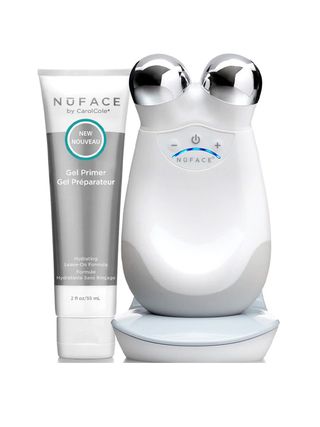
Good homecare is essential to maintaining the benefits of a professional treatment, so your thirties is a great time to invest in skincare tech. The NuFace is one of the most effective facial tools I've tried—it uses microcurrent technology to stimulate muscles and tighten skin.

Light therapy is an increasingly popular in-salon treatment, with benefits that include improved circulation, reduced wrinkles, and stimulated collagen production. You can carry on the result at home with this easy-to-use LED mask.
4. Taking Targeted Supplements
If you’ve ever done any research into "anti-ageing skincare” then you’ll know that collagen really is a hot topic. Why? Because its depletion has one of the most visible effects upon the body. "As collagen production slows down along with the skin’s repair cycle – people often complain that their skin looks duller and less tight,” says Khorana. These days collagen is mentioned not just in relation to serums and creams, but frequently in regard to oral supplements. Liquid shots, powders, capsules, and tablets which contain collagen or help the body to produce collagen are one of the fastest growing supplement categories, especially for consumers in their thirties and above.
If you’re in the market for a collagen supplement, then according to Lorraine Perretta, Head of Nutrition at Advanced Nutrition Programme, it’s best to choose one that combines collagen with other ingredients that will help the body to absorb it and use it effectively. ""All the vitamins and minerals in your body work together, so if you do not have one of the co-factors necessary for a specific process, the body struggles to complete the activity,” she explains. "For example, vitamin A and vitamin C are two key nutrients for the skin. Both of them have many benefits when taken as a supplement and maintain overall skin health, and one of their properties is supporting and strengthening collagen and elastin fibres which can help lessen the appearance of fine lines and wrinkles.”
Another change that we can anticipate in our thirties is an increase in signs of dryness and dehydration, so a supplement containing omegas 3 and 6 can be beneficial in helping to moisturise skin from within. "These essential fatty acids are also required for optimum physical and mental health,” explains Perretta. "And research has indicated that they may support skin, memory and cardiovascular health.”
Shop the hero products:
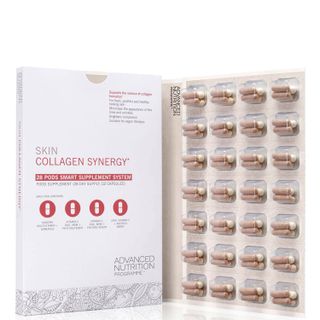
Designed to boost collagen production in 28 days, each pod contains a selection of supplements chosen for their collagen-stimulating benefits. Ingredients include vitamin D, vitamin E, folic acid, and multiple B vitamins.

If you're after a drinkable collagen, mix this powder into your water, coffee, or smoothie - it's totally flavourless.
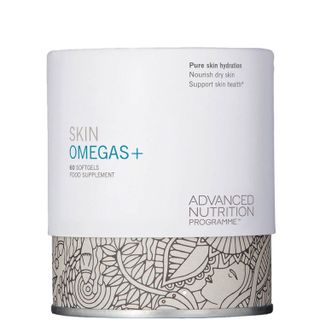
This supplement combines omega 3 from sustainable fish oil, omega 6 from evening primrose oil, and vitamin A to maintain healthy skin cells.
5. Applying SPF, Everywhere
If SPF isn’t already a staple in your morning skincare routine, then in your thirties, it really needs to be. "If you don’t use sunscreen then don’t look at other products and start here first,” says Khorana. Sunscreen is far more than just a product to use on sunny days or trips to the beach. UV rays are the biggest cause of the visible signs of ageing, and we’re exposed to them 365 days a year. In fact, because of its ability to block UV from reaching the skin, SPF really is the most effective "anti-ageing” ingredient there is. "It helps preserve collagen, prevent signs of premature ageing, reduce pigmentation and dark marks, and reduce the chance of skin cancer,” adds Khorana.
While I’ve religiously applied sunscreen daily for years, I’m definitely guilty of neglecting certain areas—something I’m keen to address in my thirties. The scalp, ears, lips, and hands are often overlooked when it comes to SPF application. However, brands are catching on, and in recent years SPF has been added to lip balms, hand creams, and even easy-to-apply sprays which can be used on hard-to-target areas like the ears and scalp.
Shop the hero products:

Totally clear and totally weightless, this mist can be used to top up protection over makeup (it also acts as a setting spray), and to reach areas such as the scalp, ears, neck, and hands.
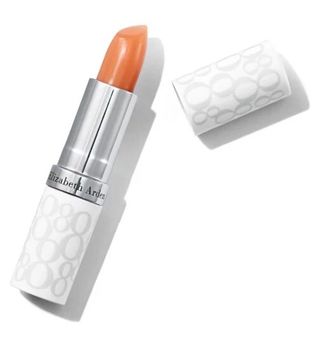
The skin of our lips is thin and delicate which means it's more susceptible to sun damage. This lightweight balm adds SPF15 protection along with moisturising benefits.
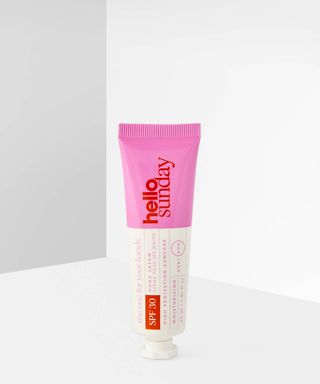
The backs of our hands get a lot of UV exposure, which is why they're often one of the first parts of the body to develop pigmentation like sun spots. This hand cream provides SPF30 protection but feels weightless and not at all greasy.
6. Layering In Extra Eye Care
I’ve been very fortunate that through my twenties I’ve never really had any major concerns with my eye area, aside from the occasional morning puffiness. However I’m well aware that, due to its thin and delicate skin (which creases easily), the eye area is typically the first to show signs of ageing. "When my clients hit their thirties they often start noticing blood vessels beneath the eyes and discolouration, which makes the appearance of dark circles and tired eyes more obvious,” says Khorana. "Some of my patients also start seeing fine lines and pigmentation appear,” she adds. Of course, there’s nothing that can be done to permanently prevent these things from eventually happening, but we can certainly
Keeping the eye area well hydrated is a great preventative measure, since this keeps the skin plump and prevents it from creasing easily. Likewise, the same antioxidant ingredients you apply to the rest of your face will also benefit the eye area, especially if you’re concerned about pigmentation and loose skin—you’ll find many eye creams and serums containing ingredients like vitamin C and retinoids.
Shop the hero products:

This innovative eye serum is formulated with a retinoid that's been specially optimised for use in the delicate eye area. It also contains ceramides to help prevent dryness and irritation.
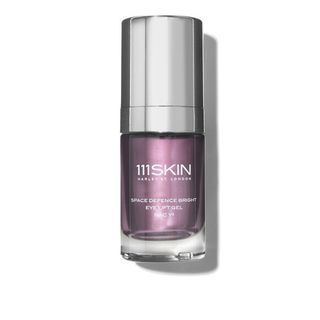
This multitasking eye gel works to address common eye-related concerns like puffiness, dark circles, and fine lines. It's boosted with antioxidants to protect skin from environmental and free radical damage.
7. Trying Tweakment Procedures
Having naturally thin and slightly wonky lips, I got lip filler in my late twenties and found it gave me a huge confidence boost. While I by no means want to rely in injectables as a "solution” to ageing, I can certainly see the benefits of a preventative approach, and I’m sure that this is something I’ll explore further in my thirties.
There’s still a lot of unwarranted stigma around cosmetic procedures, but the reality is that tweakments like filler and Botox are the future of "anti-ageing” skincare. "Cosmetic injectables are still very much seen as preventative treatments for my clients in their thirties,” says medical esthetician Bridie Bukorovic. "But your thirties are the best time to start them. Botox at this point can help to prevent lines and wrinkles from forming or becoming deeply set,” she adds. "When injected, the toxin blocks the nerve signals that cause muscles to contract,” explains Bukorovic. "So when used for aesthetic purposes it basically relaxes the targeted muscle, reducing its movement, which in turn prevents the formation of lines in that area.” This popular tweakment is often used to reduce or prevent the appearance of fine lines and wrinkles, most commonly on the forehead, around the eyes, and between the eyebrows.
As for filler, Bukorovic recommends this for clients who are noticing skin no longer appearing as plump or ‘lifted’ as it used to be. "There’s a common misconception that filler will really alter your face shape, but we can use it to restore lost volume so you can retain your natural facial features rather than dramatically changing them,” she adds. "You shouldn't notice good filler and that's my approach to my treatments. A good practitioner will advise you based on your individual face and proportions, as this should always be considered before committing to a treatment.”
In addition, for those concerned about loss of collagen, Bukorovic also recommends looking into 'collagen banking’ treatments. "Treatments like these involve injecting a hyaluronic acid based gel under the skin in targeted areas on the face, so unlike filler this does not change your features in any way,” she explains. "It’s basically skincare applied directly to the source—it stimulates the production of different types of collagen and elastin which in turn improves the overall condition of your skin, boosts hydration, and creates a smoother more youthful appearance—think baby face!” One such treatment is Profhilo, currently one of the most popular skin boosters on the market due to the fact it requires little down time, has no associated risks, and can be used to treat areas beyond the face, such as the neck, décolletage, and hands.
Next Up: I'm a Skin Expert, and These Are the Tweakments That Are Worth Knowing About
Grace Day is a beauty editor and content creator. She has over 10 years of beauty-industry experience, spanning editorial, retail, and e-commerce, which gives her a unique understanding into how people shop for their beauty routines.
While studying for a history degree (specialising in the history of beauty) and working as a beauty adviser in department stores, Grace started writing her own beauty blog in order to share the products she discovered while dealing with acne. After graduating, she moved to Beauty Bay as beauty editor and content manager. Grace is currently a beauty contributor to Who What Wear. She has also written for Hypebae and PopSugar and works as a brand consultant and copywriter.
-
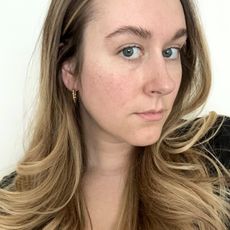 I'm 28, But My Neck Looks Older: I Asked 2 Dermatologists What to Do About It
I'm 28, But My Neck Looks Older: I Asked 2 Dermatologists What to Do About ItProject "reverse-age my neck" has commenced.
By Kaitlyn McLintock
-
 We're Beauty Experts, and This Skincare Quiz Made Us Rethink Our Beauty Regimes
We're Beauty Experts, and This Skincare Quiz Made Us Rethink Our Beauty RegimesWe couldn't believe the results.
By Rebecca Rhys-Evans
-
 Makeup Artists Say These 12 CC Creams Do the Absolute Most for Mature Skin
Makeup Artists Say These 12 CC Creams Do the Absolute Most for Mature SkinYour skin will thank you.
By Maya Thomas
-
 The 13 Best Tinted Moisturisers for Mature Skin, Ranked by a Beauty Editor
The 13 Best Tinted Moisturisers for Mature Skin, Ranked by a Beauty EditorI love a skincare-makeup hybrid.
By Grace Day
-
 I Tried the Collagen Supplement Beauty Editors Are Obsessed With—See the Results
I Tried the Collagen Supplement Beauty Editors Are Obsessed With—See the ResultsLittle bottles with big impact.
By Rebecca Rhys-Evans
-
 Whether You're 25 or 75, These Beauty Products Have Ageless Appeal
Whether You're 25 or 75, These Beauty Products Have Ageless AppealFrom mascaras to serums.
By Grace Day
-
 I Used This Beauty Product for 3 Weeks and My Skin Has Never Looked So Good
I Used This Beauty Product for 3 Weeks and My Skin Has Never Looked So GoodIt's youth in a bottle.
By Rebecca Rhys-Evans
-
 14 Serums 40-Something Celebs Always Use (But Aren't Paid To)
14 Serums 40-Something Celebs Always Use (But Aren't Paid To)Serious sleuthing, here.
By Bianca Lambert
